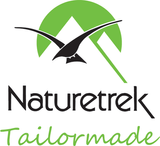


Tour Itinerary and Reports
Can I help you?
Australia's Mammals
Tour Code: AUS09A 16-day quest to see some of the iconic plus little-known mammals of Australia, focusing on Queensland and Tasmania where they are best seen.
£10,995
£9,995
Highlights
Tour Itinerary and Reports
Can I help you?
Quick Enquiry
Summary
Our holiday begins with international flights to Cairns, followed by four nights in the lush Atherton Tablelands, a hotspot for rainforest wildlife. Here we stay an eco-lodge surrounded by the Wet Tropics World Heritage Area, where spotlighting walks reveal nocturnal mammals like gliders, bandicoots, and possums. Over the next two days, we will explore diverse habitats in search of species such as the Lumholtz’s Tree-kangaroo, Platypus, and Musky Rat-kangaroo, alongside a rich array of birdlife and reptiles. A day trip to Mareeba introduces a contrasting savannah landscape, home to the Mareeba Rock Wallaby and a variety of kangaroos and nocturnal mammals.
Our journey continues with a visit to Etty Bay for a chance to see the elusive Southern Cassowary, before flying to Brisbane and transferring to Lamington National Park for a three-night stay. Nestled in subtropical rainforest, this area offers excellent mammal-watching, including echidnas, gliders, and various possums, as well as vibrant bird species. The tour then heads south to Tasmania, beginning with a night in Hobart, where spotlighting may reveal Tasmanian Pademelons and Eastern Barred Bandicoots. A day trip to Bruny Island follows, featuring a whale-watching cruise and evening searches for albino wallabies and Eastern Quolls.
The final leg of the tour includes two nights in the remote Central Plateau Conservation Area, known for Tasmanian Devils, wombats, and stargazing opportunities. The group then travels to Cradle Mountain for a one-night stay in one of Tasmania’s most iconic national parks. Here, we can observe wombats, echidnas, and wallabies and visit a conservation sanctuary for Tasmanian Devils. The tour concludes with a transfer to Devonport for return flights, wrapping up a comprehensive exploration of Australia’s unique mammal habitats.
- Australian icons - Platypus, Koala, Common Wombat and Short-beaked Echidna
- 10+ species of macropod including Lumholtz’s Tree Kangaroo, Musky-rat Kangaroo and albino Bennet’s Wallaby
- Predatory marsupials including Northern, Eastern and Spot-tailed Quoll, and Tasmanian Devil
- Spotlighting for numerous gliders, possums, antechinus and bandicoots
- Cetaceans and seals
- Huge diversity of native birdlife, including Southern Cassowary, colourful parrots and Tasmanian endemics
- Stunningly diverse landscapes, from tropical forest to subalpine moorland
- Endemic reptiles
Outline Itinerary
What's Included?
- Flights
- Food:
All food and accommodation are included in the price of this holiday, starting with dinner on Day 3 and ending with breakfast on Day 15., with the exception only of lunch on our travel Day 10.
Dates & Prices
2026

Tour Leader: George Vincent
George was 'born into' travelling, having embarked on his first flight at the tender age of 4 months! By the age of 5, George was well on his way to becoming a wildlife enthusiast, having helped his father collect hawk moths (Sphingidae) in Thailand and Costa Rica, to assist the London Natural History Museum in building its database. 10 years later, George started filming amateur wildlife videos for his YouTube channel (and later, his Instagram page) and had become adept at spotting and identifying mammals in the field.
During school, George partook in a rainforest and coral reef conservation project in northern Sulawesi, during which he inspired many of his peers with his knowledge of the natural world. George has since graduated from UCL with a bachelor’s in Geography, having achieved a first-class mark in his dissertation research, which focused on ecological perspectives and human interaction with biodiversity. Before starting university, George took a year to travel around Southeast Asia. This included embarking on a 4,300km motorcycle trip through Vietnam and completing his PADI advanced scuba-diver qualification.
2027
Tour Reports
Why Naturetrek?
At Naturetrek we craft expertly-guided group and tailor-made wildlife holidays and cruises to all seven continents. On one of our holidays, you can be assured that our passionate team will enable you to experience and enjoy the best of the world's wildlife and natural spectacles in as comfortable and rewarding a manner as possible, caring as best we can for the environment in the process. We are proud to provide:
- The widest choice of wildlife holidays worldwide
- Tours managed and led by naturalists, for naturalists
- Outstanding value and exceptional customer service
Furthermore, as a Naturetrek client, our office team are always to on hand to help you – so if you have any queries about your holiday, whether before or after you have booked, we will be delighted to answer them on the phone. Please just give our team a call!



 Loading search...
Loading search...




















